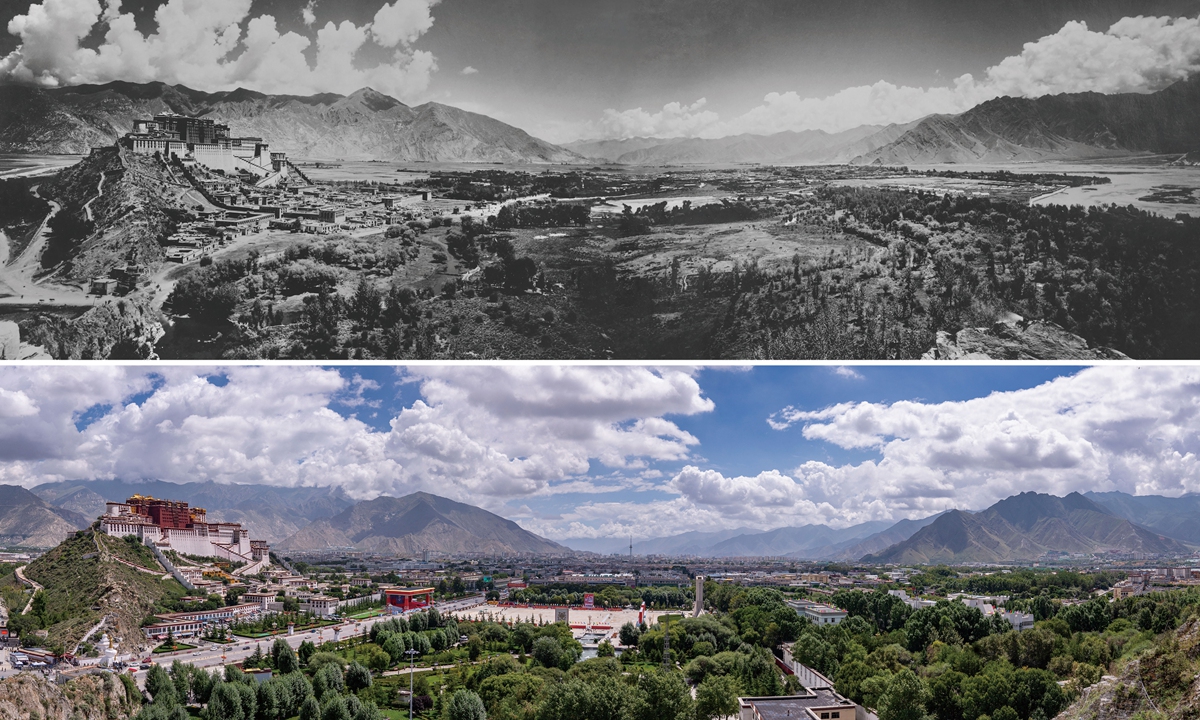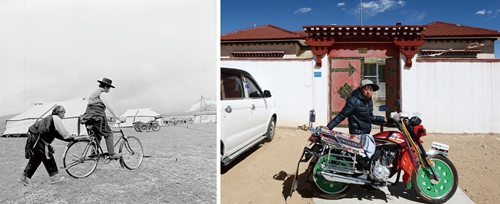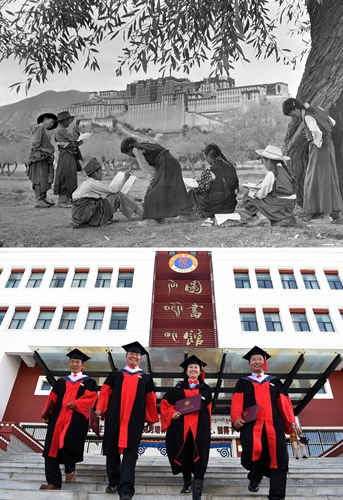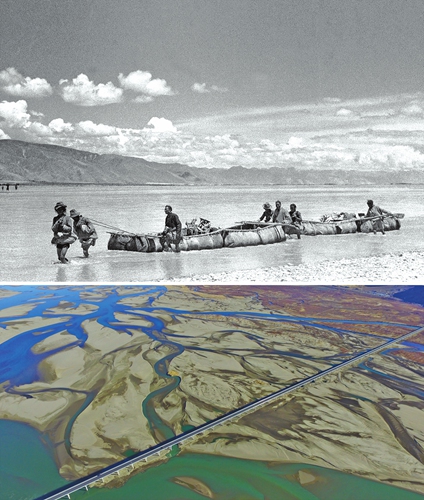
The view of Lhasa, capital of Southwest China's Tibet Autonomous Region in 1955 and 2019 Photos: Xinhua
In seven decades, Southwest China's Tibet Autonomous Region has been able to transform from a society under feudal serfdom to socialism, from poverty and backwardness to civility and progress.
The great progress in Tibet is remembered in the hearts of people who have lived and worked in the high plateau region, and is also recorded in photos, which show how precious the life in Tibet today is.
On Thursday, a grand celebratory meeting marking the 70th anniversary of the peaceful liberation of Tibet was held in Lhasa, the capital of the region.
On May 23, 1951, a 17-Article Agreement was signed by the central government and the local government of Tibet on the peaceful liberation of Tibet.
Since that date, the people of Tibet have broken free from the fetters of invading imperialism for good, and embarked on a bright road of unity, progress, and development alongside all the other ethnic groups in China.
Recalling the bitter days of the past, Phumtsog, 88, a villager from Dongkar town, Ghigatse, Tibet, said that "children were taken as serfs at a very young age when their baby teeth had just fallen out, and they had to work for their masters from dawn to dusk."
Phumtsog used to live a miserable life just like about 1 million serfs in old Tibet. Things began to change after the peaceful liberation of Tibet in 1951. One million serfs were liberated in 1959 when feudal serfdom was abolished through democratic reform, according to Xinhua.
In the old Tibet, over 90 percent of Tibetans struggled for subsistence, and up to 95 percent were illiterate. Today, hunger and poverty are a thing of the past for people of all ethnic groups in Tibet, and there is also a 15-year public-funded education system offered across the region.
During the 13th Five-Year Plan period (2016-2020), Tibet hosted close to 160 million tourist visits.
Now 140 flights connect Tibet with the rest of the country and the world.
The region ranks among the top three in China in terms of annual average growth rate, and it has topped the country in terms of growth of per capita disposable income of rural residents for many years.

In this combo photo, the left part shows a herdsman learning to ride a bicycle in Nyainrong, Nagqu in 1980s; and the right part ishows a youngster posing with a motorcycle in Nyainrong in 2017. Photos: Xinhua

In this combo photo, the upper part shows primary school students practicing drawing in front of the Potala Palace in the 1950s; and the lower part on November 10, 2017 shows doctorate holders. Photos: Xinhua

Combo photo shows boats made from cowhide carrying grain and products on the Yarlung Zangbo River in 1950s (up) and a grand bridge over the Yarlung Zangbo River in Zhanang county of Shannan, December, 2016 (bottom). Photos: Xinhua
Global Times - Xinhua







